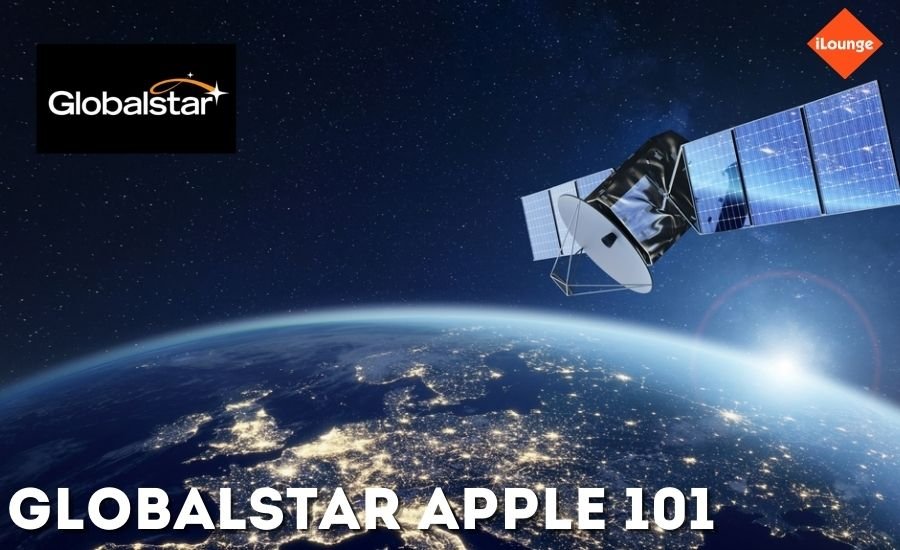Globalstar Apple 101: A Deep Dive into Apple’s $1.5 Billion Satellite Investment

In recent years, Apple has consistently innovated, aiming to provide cutting-edge technology and connectivity options for its users. One of the most groundbreaking steps Apple has taken is its partnership with Globalstar, a satellite communications company. This partnership, which has seen Apple commit to investing up to $1.5 billion, will bring unique satellite-powered features to iPhones, expanding communication options in remote areas. In this guide, we explore everything there is to know about the Apple-Globalstar partnership and what it means for the future of connectivity.
Why Apple Chose Globalstar: The Background Story
Globalstar, known for its extensive satellite network, was established with the goal of providing global communication solutions. Globalstar’s network spans the globe, making it a strong candidate for delivering reliable communication even in remote areas. Apple, with its dedication to customer safety and connectivity, has been looking for ways to keep users connected even in the most challenging environments. Partnering with Globalstar allows Apple to tap into an established satellite network rather than building one from scratch, saving time and resources.
In 2022, Apple and Globalstar launched an initial collaboration, allowing iPhone users to send emergency texts via satellite when outside cell coverage areas. This life-saving feature has already helped people in critical situations. Now, with this latest investment, Apple is scaling up the collaboration to offer even more robust satellite-based services.
Inside Apple’s $1.5 Billion Investment in Globalstar
Apple’s investment is broken down into two main parts:
- $1.1 Billion in Cash: This will be a prepayment for expanding Globalstar’s satellite network and developing the necessary infrastructure. This payment will ensure that Globalstar has the resources to upgrade its satellite constellation, covering broader areas and improving service quality.
- $400 Million Equity Stake: Apple has purchased a 20% stake in Globalstar, meaning Apple now holds a significant share in the satellite company, aligning both companies’ interests closely.
This investment will not only boost Globalstar’s satellite network capacity but also address its existing debt, allowing it to focus entirely on developing and maintaining the infrastructure that Apple needs. In exchange, 85% of Globalstar’s network capacity will be dedicated to Apple, giving iPhone users prioritized access to satellite services.
How Globalstar and Apple Are Changing Mobile Connectivity

The new Apple-Globalstar deal isn’t just a business transaction; it represents a broader shift in mobile communication, focusing on satellite-based connectivity. Here’s a closer look at some of the potential benefits:
1. Enhanced Communication Options
- The satellite services offered through Globalstar will allow iPhone users to communicate even when they are out of range of cell towers. This connectivity is ideal for individuals in remote regions, frequent travelers, hikers, and adventurers who rely on staying connected.
2. Improved Safety Features
- Building on the initial emergency SOS feature, Apple plans to provide a range of safety services using satellite connectivity. This could include more advanced location sharing, improved SOS response times, and enhanced two-way messaging capabilities.
3. Support for 5G and Beyond
- The Apple-Globalstar partnership is a strategic move that positions Apple for the future of connectivity. While 5G is widespread in urban areas, many rural and remote locations still lack consistent cellular coverage. By integrating satellite technology, Apple is preparing for a future where seamless connectivity becomes standard, regardless of location.
Key Challenges Facing the Apple-Globalstar Partnership
No ambitious technological leap is without its challenges, and this one is no different. Here are some potential obstacles:
- High Costs: Satellite infrastructure requires continuous maintenance and upgrades, and this can be costly. While Apple’s funding will cover a substantial part of these expenses, future upgrades might require additional investments.
- Regulatory Hurdles: Satellite communications are heavily regulated. To provide global coverage, Apple and Globalstar must navigate various regulations across different countries, potentially delaying the full rollout of services.
- Technical Limitations: While satellite communication can extend coverage, it may still have latency issues compared to traditional cell towers. Apple will need to refine and optimize how iPhones manage satellite connections.
You May Also Like: Windows 11 Shunt Without Doing Anything
Future of Satellite Connectivity: Where Apple and Globalstar Are Headed
The Apple-Globalstar partnership is just the beginning of a broader shift towards satellite-powered connectivity. Here’s what we can expect:
1. Wider Availability of Satellite Services
- As satellite technology becomes more affordable and accessible, we might see satellite coverage become a standard feature in smartphones. This would allow users to make regular calls, send texts, and use internet services from virtually any location on Earth.
2. Integration with Other Tech Giants
- Apple’s move might inspire other tech companies, like Google or Amazon, to explore similar partnerships. Amazon, for instance, has already been working on its Project Kuiper, which aims to provide satellite internet worldwide. As more companies join the race, consumers can expect rapid advancements in satellite-based communication.
3. More Applications in Emergency Services
- Beyond personal use, satellite connectivity can transform public safety. Emergency responders could receive real-time data from affected areas, improving response times and coordination in natural disasters and remote accidents.
What Users Can Expect from “Globalstar Apple 101” Services
The “Globalstar Apple 101” initiative—powered by Apple’s latest investment—is set to redefine iPhone communication. Here are some specific features users may look forward to:
- Faster SOS Services: Future iPhones might feature an advanced version of the Emergency SOS system, enabling faster location tracking and two-way communication in emergencies.
- Global Connectivity: In the long run, iPhone users could potentially make voice and video calls over satellite, extending communication to regions without cell service.
- Enhanced Data Services: While satellite data speeds are generally slower, advancements could allow limited data use, such as navigation apps and basic messaging, in areas without traditional network coverage.
Conclusion
In summary, the partnership between Apple and Globalstar is an exciting step forward in making sure iPhone users can stay connected, even in places where regular cell service doesn’t reach. With a big investment of $1.5 billion, Apple is helping Globalstar improve its satellite network, which means more safety features and better communication options for users. Whether you’re hiking in the mountains or traveling in remote areas, this partnership could make a real difference in how you stay in touch.
Looking ahead, the Apple-Globalstar collaboration could bring even more possibilities, like emergency services that work anywhere and, one day, maybe even calls and texts over satellite. This is more than just a cool feature; it’s a way to keep people connected and safe wherever they go. As this technology grows, it’ll be interesting to see how it shapes the future of staying connected around the world.
FAQs
Q: What is the Globalstar Apple 101 partnership?
A: The Globalstar Apple 101 partnership is Apple’s collaboration with satellite company Globalstar to provide iPhone users with satellite-based connectivity in areas without cell coverage.
Q: How much is Apple investing in Globalstar?
A: Apple is investing up to $1.5 billion in Globalstar, including $1.1 billion for satellite infrastructure and $400 million in a 20% equity stake in the company.
Q: What benefits does this partnership bring to iPhone users?
A: It enables iPhone users to connect via satellite for emergency messages and potentially other services when they’re in remote areas without cell service.
Q: How does Globalstar support Apple’s satellite services?
A: Globalstar provides 85% of its satellite network capacity to Apple, ensuring prioritized satellite communication access for iPhone users.
Q: Will this partnership improve safety features on the iPhone?
A: Yes, the partnership expands emergency SOS features, allowing users to contact help even in remote locations without cell coverage.
Q: Does this partnership affect other phone users?
A: The current satellite services are exclusively available to iPhone users as part of Apple’s dedicated arrangement with Globalstar.
Q: What are the future goals of the Globalstar Apple partnership?
A: The partnership aims to expand iPhone satellite communication capabilities, potentially offering more robust services and global connectivity options over time.
Up Next, Don’t Miss: Slayunny2

Specializing in insightful and engaging articles across a range of topics. With a keen eye for detail and a passion for delivering high-quality information, Mary helps readers stay informed with the latest trends and updates


